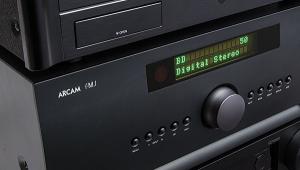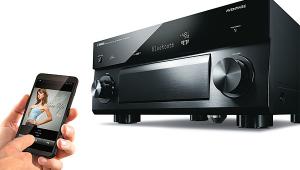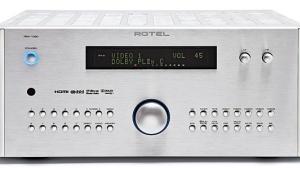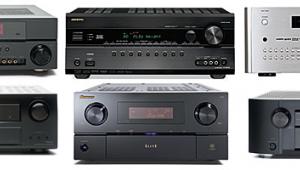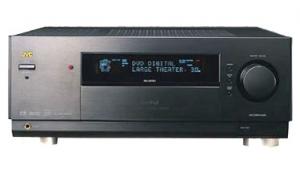How to Buy an AV Receiver
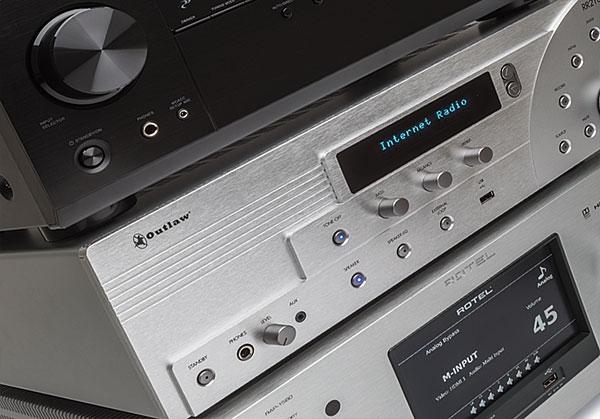
News flash: AVRs are still around, and when mated with good loudspeakers, they still deliver the most audio bang for your buck and, by far, the best listening experience. Granted, with all those soundbars around, only the knowledgeable enthusiast or an A/V installer buying for a client is likely to take on the installation and operational challenges associated with an AVR. But when it comes to great TV sonics, you need the multichannel surround sound associated with widely spaced speakers—ideally featuring the immersive audio that comes with a Dolby Atmos, DTS:X, or Auro-3D installation. You also need serious dynamic capabilities (i.e., volume) and truly deep bass. The best of the soundbars might impress the average listener and deliver improvement over a flat-panel TV’s built-in speakers, but they remain pretenders to these higher aspirations. If you want the real deal, you still have to get down and dirty with an A/V receiver.
Back to Basics
Older audiophiles may recall that audio receivers were developed to combine what were once only available as three separate components: a preamplifier, a power amplifier, and a radio tuner. Back at the dawn of hi-fi, each of these was on its own chassis and driven by its own power supply, and each took up its own space in your rack. It wasn’t long before integrated amplifiers combined the preamp and power amp; then the radio tuner was added—hence the name “receiver.” When things migrated from mono to stereo to multichannel home theater, the preamp section gained surround sound processing to decode soundtracks, and the power amp got more and more channels—first five, then seven, then nine, then 11 in today’s most advanced units. And here we are.
Each section, of course, has its own function. The preamp/surround processor acts as the commander of your system, accepting connections from all the source components and switching audio and video signals simultaneously. A source component (cable box, Blu-ray player, smart TV, Bluetooth-enabled smartphone, etc.) delivers a low-level audio signal (probably digital) to the preamp section, where it can be manipulated for volume or tone (equalization) adjustments and surround decoding before being sent to the AVR’s power amp section.
The surround processor, meanwhile, decodes the multichannel digital audio bitstream signals from discs, broadcasts, or internet video streams—say, a Dolby Digital or DTS soundtrack—and directs the appropriate sound to each speaker. Matrix-surround signals encoded onto stereo analog tracks will also be decoded here. Alternately, the surround processor can take a two-channel stereo track and derive surround sound from that, using all the additional speakers in the system. Atmos- and DTS:X-capable AVRs allow for both stereo and conventional 5.1-channel and 7.1-channel soundtracks to be mapped out to include their height speakers. (Many theaterphiles, myself included, have positive reports to share about the performance of these algorithms, which create mostly natural effects that enhance the listening bubble without calling overt attention to the speakers; more on that later.) Once all of this is done, the multichannel power amp section provides the juice to drive your speakers to sufficient volume.
The final section of the receiver is surely the most critical: the AM/FM radio tuner. OK, I jest. Maybe not so critical after all in this day of networked receivers that can easily tune in a signal from your favorite local station via web stream—a signal that’s likely quieter than what you can capture off the air, at least short of using a roof antenna instead of that little AM hoop or the FM stringy thing that the AVR manufacturer includes in the box. However, as our diehard tuner fans have often reminded me, the fidelity of a good FM signal can be excellent, perhaps exceeding that of a stream with a low-to-moderate bitrate. And, admittedly, when the Martians finally attack and the internet goes down, the ability to tune in those Emergency Alert System broadcasts could make all the difference between a sweet life hiding out in the mountains or being enslaved and forced to watch an endless loop of YouTube cat videos.
How Many Channels?
For a long while, we’ve considered the basic 5.1-channel speaker configuration to be the minimum for an engaging home theater experience. This includes front left-, center-, and right-channel speakers; a pair of surround speakers placed ideally along the side walls (and slightly behind and above the prime seats); and a dedicated powered subwoofer (the .1). That’s still true, and the combination of wide placement of the front speakers and the inclusion of discrete surround speakers for directional and spatial cues is what makes even the most basic 5.1 speaker system obviously superior to any soundbar at creating a sense of perspective and precisely positioning individual sonic elements of the performance. Blu-rays and streamed movies with discrete high-resolution 7.1channel soundtracks are now common, which helps justify adding back-wall surrounds to the basic 5.1 layout. But these days, you’ll get more from those two extra amps in a 7.1-channel receiver by using them for a pair of Dolby Atmos/DTS:X height channels (see below). Other options are to use the extra amps to drive a pair of speakers in another room or to biamp a suitable pair of front speakers; many AVRs have these capabilities.
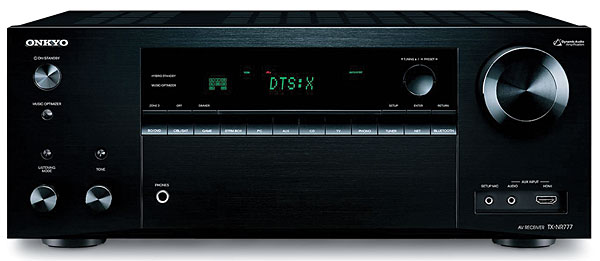
Amp It Up
Amplifier power output is a critical spec for any AVR, but don’t be fooled by the numbers. Most receivers today are spec’d at or near 100 watts per channel, each with something close to the common measurement of 0.1 percent total harmonic distortion (at least with only one channel running at a time). Typically, this is into an 8-ohm speaker load, though some AVRs are spec’d now for a nominal 6-ohm load—a ploy to inflate the claimed power output number against that of competitive models. Stating power at a higher distortion figure will also boost the stated wattage. (We consider 1 percent to be the maximum distortion you should accept in most applications where fidelity is critical, and we measure amplifier output at 1 percent and 0.1 percent distortion into 8-ohm and 4-ohm loads for AVRs we review.)
Assuming all things being fair and equal (meaning, the same power rating for similarly measured amps driving similar loads with similar amounts of distortion and with the same type of input signal), what’s the difference between one amp and another? The answer lies in what we call headroom, which more or less describes the ability to handle loud, complex passages in multiple channels simultaneously without introducing audible distortion. Many similarly rated AVRs may sound coarse under these conditions, or they may run out of steam and clamp down on power output to all the channels (or even shut down temporarily) to avoid overheating.
An amp’s headroom is largely dictated by the ability of its power supply to deliver serious energy for instantaneous peaks, even while playing at a high average volume. This is loosely analogous to a car engine that can still kick your head back when you floor the accelerator from 60 miles per hour. For a telling sign, look at the five- and seven-channels-driven measurements that we include in the Test Bench section of our AVR reviews. Although these torture tests are far more demanding than any realworld situation an AVR is likely to encounter, power output that meets or approaches the published two-channel spec with five or seven channels working all out simultaneously usually indicates a more robust power supply and the ability to drive your system to louder levels with less strain. AVRs that do so are increasingly rare, though, so don’t necessarily penalize one for not delivering the same power with all channels driven.
Also, bear in mind that the old “lift test” that equated an amplifier’s weight with its output is no longer quite so valid. A giant (often toroidal) transformer attendant to the power supply and the large, heavy heatsinks of a robust Class A or Class A/B amplifier are still a requirement for those circuit topologies, but Class D switching amps deliver power more efficiently and result in a smaller, lighter chassis. Until recently, Class D’s inherent distortions restricted these amps to use in powered subwoofers, cheap soundbars, and self-powered speakers, but audiophile Class D designs are now a reality. Notably, Pioneer has been using Class D for their best AVRs for several years now, and Denon recently released the Class D HEOS AVR (reviewed in our October issue and also available at soundandvision.com). Sound quality among Class D amps can still vary widely, though, so read the reviews.
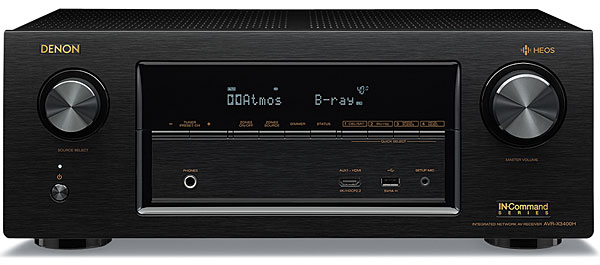
Another benchmark to watch for is THX certification. When mated with THX-certified speakers, a THX receiver guarantees the ability to achieve cinema-reference volume at the listening position in a room whose cubic space is specified by the level of certification. But other measures are taken into account in the certification process that assure a certain baseline of performance even with noncertified speakers.
Surround Yourself
Every modern receiver offers the same standard surround modes to directly decode the soundtracks embedded in movie discs, streams, and broadcasts. The basic suite, even in the most inexpensive models, includes the “lossless” formats Dolby TrueHD and DTS-HD Master Audio and their “lossy” counterparts, Dolby Digital/Dolby Digital Plus and DTS/DTS-HD. (Lossless compression delivers a bit-for-bit replica of the original signal to the receiver; lossy compression sacrifices some signal information to reduce file size or data rate requirements for disc storage or web streaming.) Virtually all stepup receivers with seven or more channels also include processing for Dolby Atmos and DTS:X object-based surround soundtracks. You’ll likely be listening to core Dolby Digital and DTS surround tracks on DVDs and web video streams, or their higher-bitrate DD Plus and DTS-HD counterparts. Cable and off-air broadcasts mostly remain core Dolby Digital. For the moment, the much better-sounding Dolby TrueHD and DTS-HD Master Audio remain restricted to Blu-rays and the new Ultra HD Blu-rays.
Object-based surround sound, sometimes called “immersive audio,” has been promoted for home theater since late 2014 when the first Atmos products came to market. The jury remained out for a while on how important or effective it would be, but many enthusiasts would now argue that it has proven itself a must-have feature for anyone serious about home theater audio, as it adds obvious spatial benefits when playing well-mixed soundtracks. The Dolby Atmos and DTS:X formats add ceiling-mounted speakers, which, when provided in sufficient quantity and positioned appropriately, can precisely place audio objects (voices, Foley effects, etc.) overhead or anywhere inside a dome-shaped soundfield according to the mixing engineer’s wishes. Atmos systems also provide the option of using upward-aimed, ear-level, “Atmos-enabled” speakers that bounce the sound for the height effects off the ceiling, eliminating the need to wire and mount built-in ceiling speakers. However, it’s generally accepted that the best results are had with ceiling-mounted speakers. DTS:X soundtracks can effectively utilize either Atmos speaker layout.
A few AVRs and surround processors—primarily those from Marantz, Denon, and some high-end boutique brands—also offer Auro-3D processing, which similarly uses height speakers for an enhanced surround effect. (Note: Auro-3D is a paid upgrade for Marantz and Denon AVRs, while the high-end processors typically include it.) This European-based technology requires a different and more elaborate speaker setup than Atmos or DTS:X, however, and Auro-3D-encoded movie and music software for the U.S. is still difficult to find. The latest surround processors that are equipped to handle it do provide listening modes to optimize Atmos and DTS:X soundtracks for an Auro-3D speaker setup, and there are those listeners who advocate Auro-3D in its 9- or 11-speaker layout as the best of the immersive formats. Nonetheless—for now, at least—Auro-3D remains something of an esoteric oddity.
